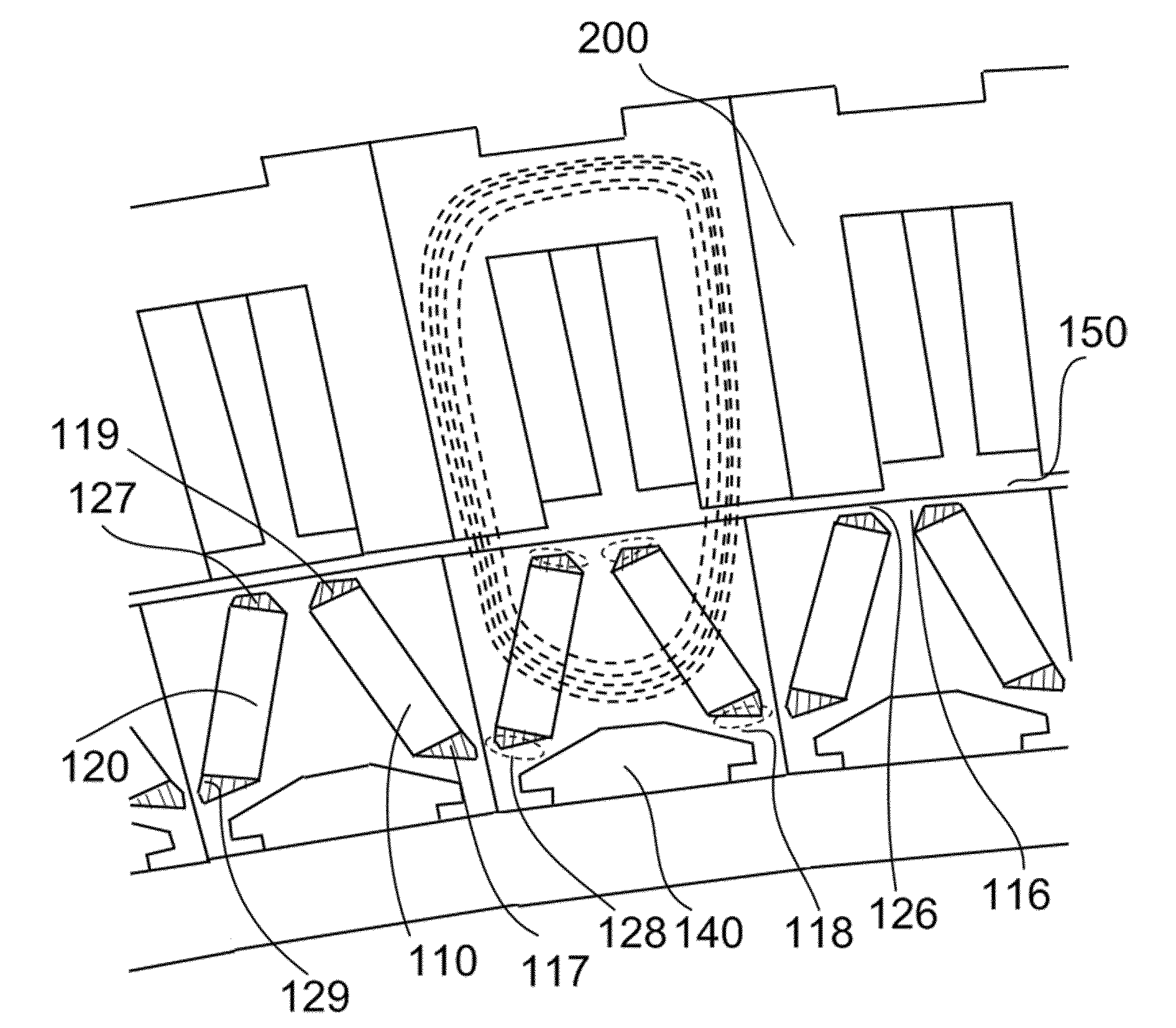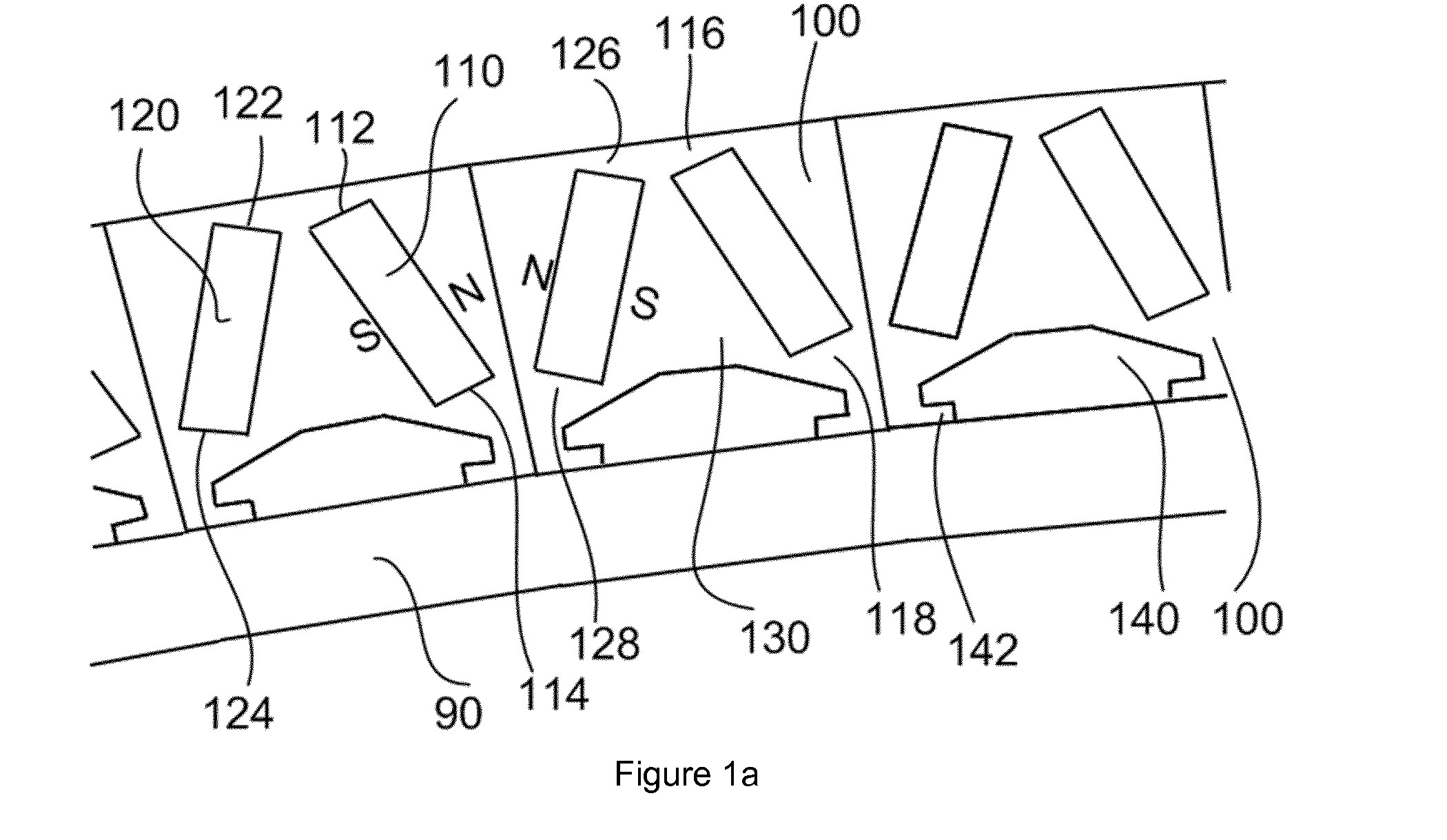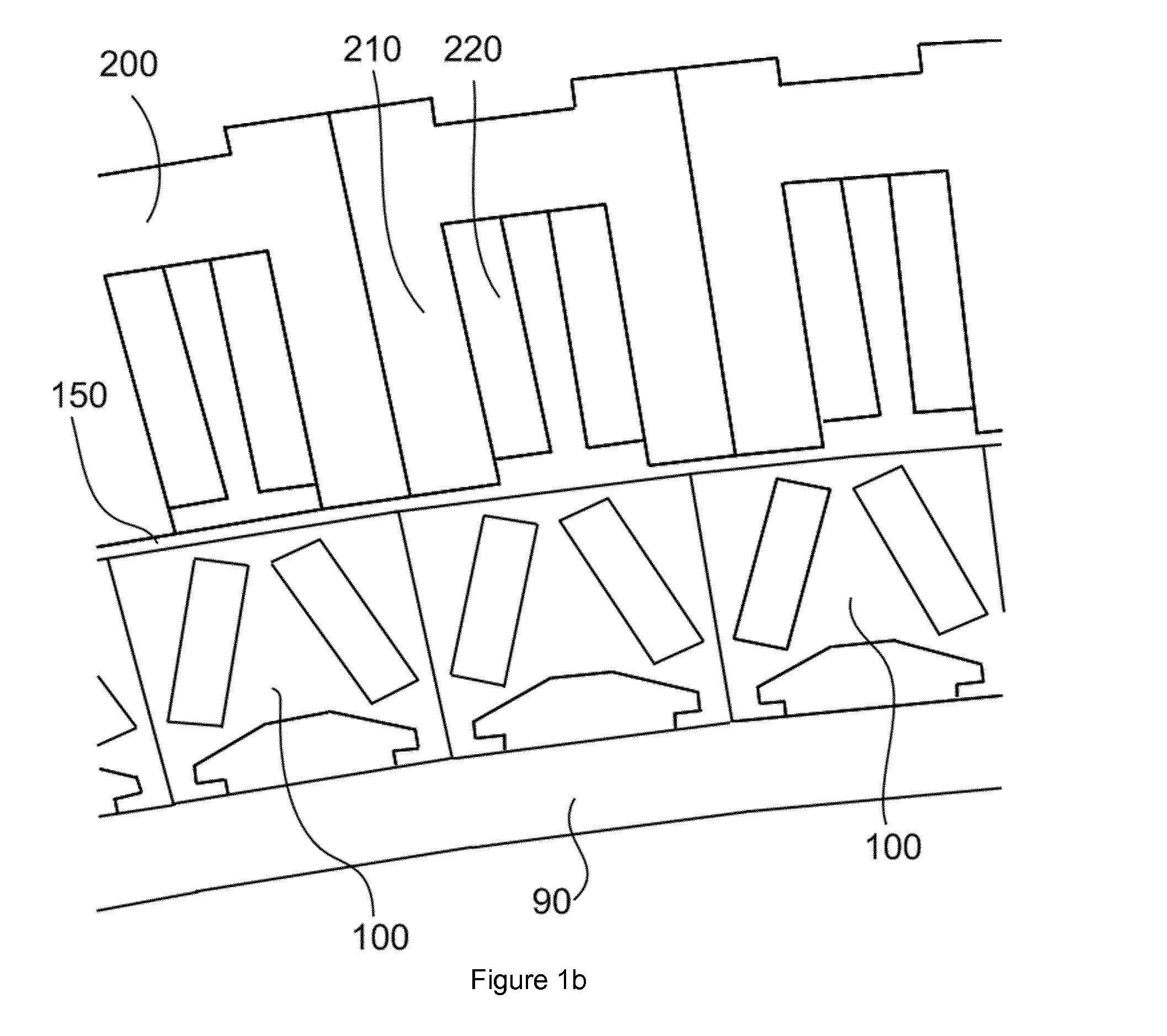Permanent magnet rotor
a permanent magnet rotor and permanent magnet technology, applied in the direction of motors, wind energy generation, dynamo-electric machines, etc., can solve the problems of high cost of materials, cumbersome manufacturing process, and inability to meet the needs of continuous axial cross-section, and achieve the effect of reducing the loss of magnetic flux, facilitating assembly and maintenance, and constant axial cross-section
- Summary
- Abstract
- Description
- Claims
- Application Information
AI Technical Summary
Benefits of technology
Problems solved by technology
Method used
Image
Examples
Embodiment Construction
[0030]FIG. 1a schematically illustrates an outer edge region of a permanent magnet rotor of an electrical machine, e.g. a generator of a wind turbine. The rotor in this example may comprise a rim 90 and a plurality of modules 100 attached to the radially outer circumference of the rim 90. The use of modules may facilitate assembly and repair, particularly of large generators, such as generators that may be found on direct drive wind turbines.
[0031]Each module 100 may comprise a first and second principal permanent magnet 110 and 120 respectively arranged on a base 130. The base 130 has an upper portion with a substantially isosceles triangular cross-section with the permanent magnets arranged along the sides of the triangle.
[0032]The permanent magnets 110 and 120 are arranged to be inclined with respect to a local radial plane. The magnets have a circumferential magnetic orientation (also sometimes referred to as “transversal” or “tangential” orientation), i.e. the North and South o...
PUM
 Login to View More
Login to View More Abstract
Description
Claims
Application Information
 Login to View More
Login to View More - R&D
- Intellectual Property
- Life Sciences
- Materials
- Tech Scout
- Unparalleled Data Quality
- Higher Quality Content
- 60% Fewer Hallucinations
Browse by: Latest US Patents, China's latest patents, Technical Efficacy Thesaurus, Application Domain, Technology Topic, Popular Technical Reports.
© 2025 PatSnap. All rights reserved.Legal|Privacy policy|Modern Slavery Act Transparency Statement|Sitemap|About US| Contact US: help@patsnap.com



